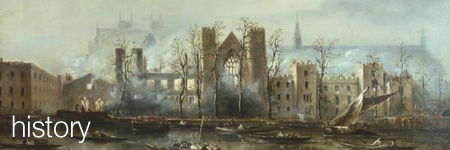
Whitehall
Charing Cross (SW1) Although the present remains of Whitehall are comparatively modern, not reaching farther back than the time of the Tudors, yet we know from history that there was a palace standing here as early as the reign of Henry III, when the Chief Justice of England, Hubert de Burgh, Earl of Kent, resided in it. At his death he left it to the "Black" Friars of Holborn, who sold it to the Archbishop of York; and his successors in that see made it their town residence for nearly three centuries. The last dignitary of the Church who tenanted it was Cardinal Wolsey, under whom it became one of the most sumptuous palaces in England. The ancient palace of Whitehall (if we include its precincts) was of great extent, stretching from close to where now stands Westminster Bridge nearly up to Old Scotland Yard. Whitehall was known as York Place when in the possession of Cardinal Wolsey, with whose history the palace is so intimately connected. It was not until it passed into the hands of King Henry VIII that it came to be known as Whitehall. (Thornbury'& Old and New London, vol. III, pp. 338-64) On a scaffold erected outside a window of the Palace of Whitehall, Charles I was executed.